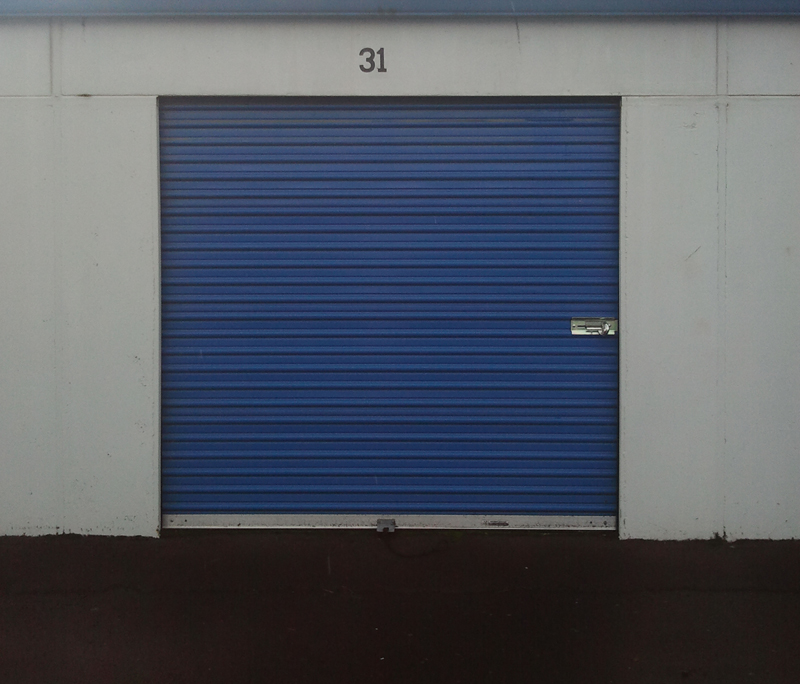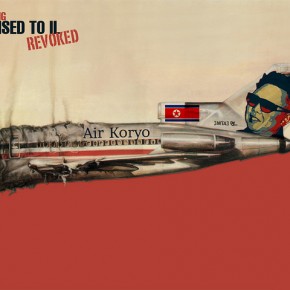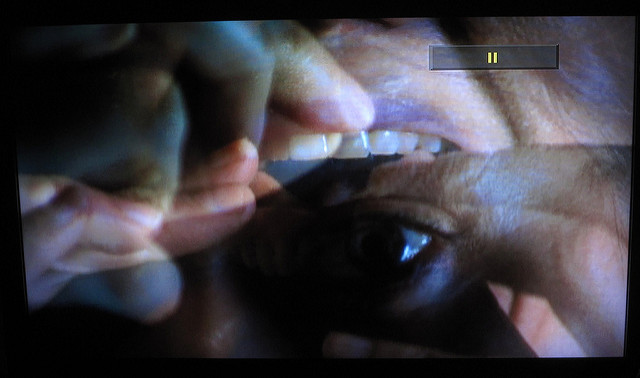When I look back on the material Souciant has published since its March debut, I am awed by its diversity. Considering that we generally restrict ourselves to five pieces per week, it’s remarkable to be doing so many things well. Pride doesn’t come easy for me. But I am deeply honored to be part of a project that values freedom — of subject matter, of style, of sensibility — above policy.
There’s a price to pay for such breadth. In this era of niche marketing, doing one specific task well is the easiest way to build a brand. To vary the mix as much as we’ve been doing at Souciant is to risk confounding readers who would rather know what to expect.
But it’s a risk we’ve been willing to take, precisely because the “brand” we’re trying to develop is not defined by the subjects we cover or the styles of writing we permit, but a philosophy.
When Souciant was getting ready to launch, I fielded a lot of criticism about our name. Some thought it sounded too strange. Some thought it sounded too soft. Some thought it sounded “too French,” which in the United States often means the same thing. Remember the conservative push to rename pommes frites “freedom fries” after the White House decided to invade Iraq?
Almost everyone had trouble pronouncing our name. Many still do. But that’s sort of the point. That hesitation that comes when you aren’t sure how to say something, the reluctance to get it wrong, reproduces the feeling that “souciant” is meant to communicate. Yes, it’s spelled the same as the French word, which means, roughly, “worrying.” But we’re an English-language publication and conceive of it, not as a lexical borrowing in need of italicization, but the negative space of a word with impeccable OED credentials: “insouciant.”
If the insouciant are carefree to the point of recklessness, rushing forward into the breach, we stand for those who hold back in order to reflect. Worrying has largely negative connotations. Etymologically, it means to shake or stretch, even to strangle. We envision “souciant” as a positive alternative. The souciant person, in our estimation, isn’t someone who clutches a problem with too tight a grip, but one who takes care to exert the right amount of pressure; someone who won’t let go prematurely but also knows when it’s time to move on.
Starting a publication has never been easy. To be sure, these times pose great challenges, particularly where finances are concerned. But it’s not as if the people who began one in 1711, 1811 or 1911 were awash in money. The difference today is that, as the technical aspects of publishing have become more affordable, the sheer output of words and images has shifted the entrepreneurial burden from production to distribution. The list of worthy magazines, both in print and online, that have failed because they couldn’t build a regular readership has been growing at a depressing rate.
That’s why Souciant’s first year of existence has unfolded under the motto “Quality over quantity.” We have tried very hard not to try too much. Under the extraordinarily able stewardship of Joel Schalit, my Co-Editor-in-Chief — and the publication’s de facto managing editor — we have stayed true to a vision in which publishing great material is only half the battle.
Rather than wasting our energy sawing away at massive trunks in the middle of the woods, we have chosen our spots carefully, preferring a modest but steady output that makes the rounds over more ambitious projects that might lie moldering wastefully on the forest floor. Part of being souciant involves caring for the work we publish after we’ve published it. That’s the idea, anyway, though my own efforts have sometimes drifted towards less practical ends. I am profoundly grateful to my Souciant collaborators, particularly Joel, for doing their best to rein in my less rational impulses.
That said, it doesn’t hurt to dream big. As we look forward to 2012, I thought it might be helpful for both us and you, our wonderful readers, to review the original impetus for starting this publication and reflect on how to grow without losing sight of the goals that matter most. Even if some aspirations require resources not presently at our disposal, articulating them can be a powerful incentive to seek out new sources of support.
One advantage to our digital age is that we can consult the archive in situations where memory might once have had to suffice. Because Joel and I first discussed the idea of starting a new publication together in Gmail exchanges, our motivations and desires can be recalled with a quick search. Frustrated with the limitations we’d been operating under at previous publications where we had worked together in the past decade, we started brainstorming to imagine something better in a series of exchanges during the first week of October, 2009.
Both of us were keen to avoid the straitjacket of identity politics. And we saw a powerful need to revisit the do-it-yourself approach that had inspired us in the 1990s. At one point during our first long chat, Joel advocated “a return to a kind of holistic, dare I say, progressive focus, lost with the destruction of the alternative print press, and the death of traditional punk media… The magazine will editorially herald a return to the political interrogation of culture, and the cultural interrogation of politics.” He added that he wanted to create something that would appeal to readers of both The Wire and The Economist.
It was at this point that I told him about a domain name I’d registered previously, one that seemed ideally suited to such a project. “To be ‘souciant,’ I proffered, is “to care, with gravity, but not pretense.” This got us thinking about the temporality of caring, how we would like our still-hypothetical publication to be firmly rooted in the present, with an eye on the future, rather than succumbing to the pull of nostalgia. After critiquing a recent article in The Believer, a magazine we both found disappointing because it could do so much more with its format, Joel conjectured how we might conceive of our project as an alternative. We could try to make up for that publication’s lack of politics and internationalism, while drawing inspiration from its strengths.
A few months later, as we were moving forward with our preliminary planning, Joel and I had an exchange that resulted in a different way of conceiving Souciant’s purpose. Instead of focusing on what we didn’t want to be, we instead opted to envision the publication in non-comparative terms, through the lens of metaphor. Joel came up with the best one, suggesting that our publication could communicate the sort of experiences he was then having as a new arrival in Italy. “When you’re walking down Via Padova, where all the Arab and Latino immigrant workers live and hang out — zero hipsters — and you hear, drifting in from a side street garage, in between blips of Arab pop being blasted out of cars slowly driving by, an Italian anarcho-grind band rehearsing”: that mix of disorientation and delight, he thought, is what our publication should aspire to achieve.
Although hardly your typical mission statement, this idea has exerted a powerful influence on the realization of Souciant. The very aspects of the publication that baffle visitors who are looking for a simple music site or a straightforward political forum are the ones that we take special care to preserve. We may lack the resources to cover the world in a traditional journalistic sense. Yet if we pay close attention, we can cover the ways in which it comes to us wherever we happen to be, whether it’s the Via Padova or a lonely Arizona highway.
The most subtle lesson of globalization is that technology has played havoc with our sense of distance. The earth is round. But the world is folded like a Moebius strip. Sometimes a journey of three blocks can take you farther than a transoceanic flight. The souciant person is the one who takes the care necessary to register this passage in all its strangeness and wonder without succumbing to the lure of exoticism.
One of the features we discussed building into the publication as we were starting out was a thread-based structure, in which writers would return to their favorite topics repeatedly over a period of time. Although we weren’t able to implement this idea as originally conceived, the slow accretion of content at Souciant will make it possible to reveal its lineaments retroactively. Provided that we continue to publish such a wide range of material, we will eventually build an archive that can be navigated, not only by cold search-engine queries, but “warm” guided tours.
In other words, that montage-like experience Joel articulated need not be confined to the linear chronology of Souciant’s weekly schedule. If we are clever, we can open the door to new uses of our content without having to pay for complicated technological upgrades. For my part, as I consider our prospects for 2012, I want to extend the notion of caring for what we publish after it has been published even further along these lines.
Back in October, 2009, I sent an e-mail to Joel in which I emphasized a desire to be liberated from the tyranny of the narrow present. I was sick of publications “too bound to the dictates of the marketing types pushing the latest releases and re-releases” and wanted to write for a venue open to “the realization that the distinction between back catalogue and current items is becoming irrelevant.” Now, as I ponder Souciant’s future, I want to extend this principle to our own “back catalogue.” There’s a lot of value left in pieces after they have ceased to qualify as current. To be souciant is to recognize that quality and find a use for it.
Photograph courtesy of Rich Jensen.





